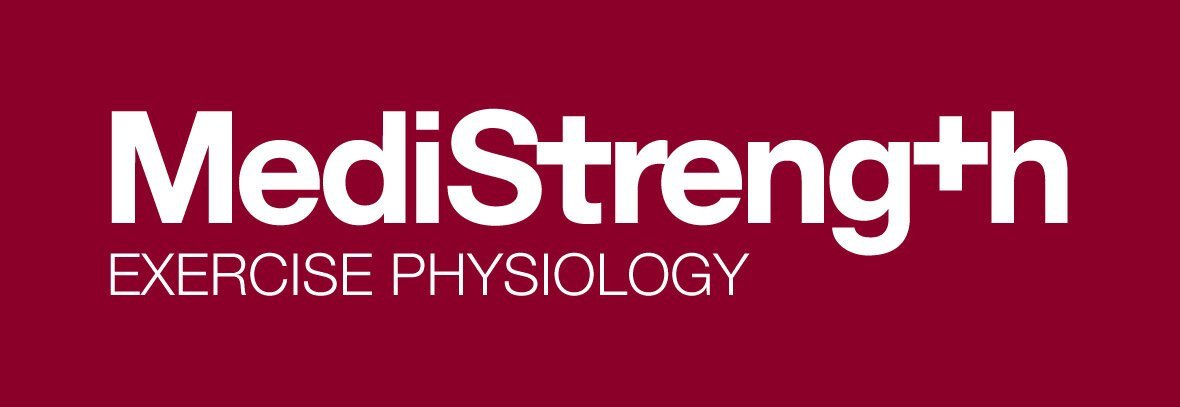FAQs
What does an Accredited Exercise Physiologist (AEP’s) do?
AEPs are university qualified allied health professionals equipped with the knowledge, skills and competencies to design, deliver and evaluate safe and effective exercise interventions for people with acute, sub-acute or chronic medical conditions, injuries or disabilities. Pathology domains covered by the services of AEPs include cardiovascular, metabolic, neurological, musculoskeletal, cancers, kidney, respiratory / pulmonary and mental health, and any other conditions for which there is evidence that exercise can improve the client’s clinical status.
What can an Accredited Exercise Physiologist at MediStrength do for me?
We are specialists in strength. Our programs provide long term solutions to musculoskeletal problems, as well as enhancing day to day performance and quality of life. Whether you are seeking relief from pain or looking to improve your physical performance, come in and see what makes our training different from anything you’ve tried before.
What is the difference between a physiotherapist and an exercise physiologist?
Distinguishing between an Exercise Physiologist and Physiotherapist can be difficult, in saying this we have tried to provide some clarity on this common question.
When it comes to prescribing exercise, Exercise Physiologists are the most qualified allied health professionals in Australia. We specialize in clinical exercise interventions for people with a broad range of health issues. Whether you are at risk of developing, or have existing medical conditions, musculoskeletal injuries, a disability, or general health. Along with evidence-based exercise and rehabilitation, we include physical activity and health education, and lifestyle and behaviour modification advice, support and monitoring throughout your treatment.
While Physiotherapist are experts in the structure of the human body and its movement. Their work is done during the diagnosis and acute phase of an injury or condition. They are involved in the hands-on evaluation, assessment and treatment of patient care. They may include some exercises in your treatment, along with other interventions such as airway clearance techniques and breathing exercise, joint manipulation and mobility massage, and assistance with the use of aids.
What is the difference between a personal trainer and an exercise physiologist?
An Accredited Exercise Physiologist has undertaken 4 years of university training and is a qualified allied health professional who specialises in the delivery of exercise and lifestyle modification for prevention, treatment and management of chronic health conditions and injuries.
It does require yearly Professional Development to maintain accreditation and is recognized by Medicare, Private Health Funds, WorkCover and NDIS to receive rebates.
Personal Trainers have undertaken a diploma in Personal Training and work in Fitness Centres or Gyms. They are responsible for educating clients and enforcing policies regarding safe and proper use of equipment. Individuals holding this position must be able to develop, document, and implement one-on-one, partner, or group workout programs that match the needs and goals of clients.
What are the benefits of the Nautilus equipment?
Nautilus Biomechanics offer the safest workout from variable resistance (low injury factor) and greater muscle activation (faster results).
They are the only equipment that has different “Nautilus” cams dedicated to each muscle group with an optimal strength curve technology (The weight load changes in different ranges of the motion and therefor mimicking muscle load perfectly).
What is the EasyTorque strength assessment?
The EasyTorque is a measuring system for the analysis of the power capacity of the major muscle groups i.e. the maximum muscle strength the individual can push or pull in certain directions of movement. The force that is pushed is compared to the average age and weight group of that individual in the various muscle groups with an analysis provided. It is important to know the muscular imbalances as they are responsible for the development of damage and functional disorders which lead to injury to the musculoskeletal body. The EasyTorque measurement will decide which muscle groups to train to get back in strength balance and a subsequent repeat test after 12 weeks will enable further comparisons - and thus an empirically precise control of success.
What happens during the initial 60 minutes assessment?
We will discuss what your main goals are and any medical, lifestyle and exercise history that is relevant to your current health status. We will also conduct simple physical assessments to help us determine your current functional capacity. Following this, we will analyse your strength and muscular balance using our EasyTorque strength assessment. All this information helps our AEP to tailor an individualised exercise program for you.
What is the training program at MediStrength?
The training sessions will usually take around 40 minutes for the AEP to guide you through the tailored exercise program to ensure that you can complete it correctly and safely. The program generally involves both machine-based and functional resistance exercises that target areas of weakness. We will also include some aerobic training for improvements in cardio-respiratory fitness.
What does a typical customer journey look like?
Customers will go through a minimum of 5 one-on-one sessions to allow time for them to clearly understand the exercise technique and the set up for each equipment. Following that, customers will be able to come in 2 – 3 times a week independently with no booking required to allow for more flexibility time wise. During this time, there will always be a professional staff member available to provide some supervision to ensure all exercises are completed correctly and will adjust the program accordingly.
